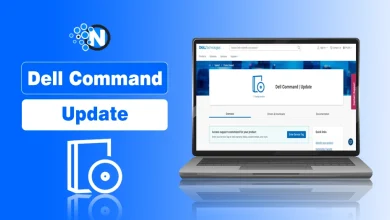Guide To Business Process Management Software in 2025

All businesses should have at least one business process in their day-to-day operations. Generally, we can define a business process as a series of related tasks performed to achieve a specific business objective. For example, if you are a restaurant owner, then the collection of duties performed by your kitchen team to cook your restaurant’s signature dish is a business process.
If this business process achieves the desired result, we can say that it is performing well. However, not all of these processes will achieve these results or not achieve the objectives effectively in practice.
This is where business process management comes in.
What Is Business Process Management?
Business Process Management, or BPM, is the act of creating, managing, and optimizing your business process (or business processes) to achieve the business objective as effectively as possible.
Business Process Management is not the technology or software solution. However, proper Workflow Management software can significantly help implement BPM by providing centralization and transparency across the business processes.
BPM is also not a one-off thing, but rather a continuous effort aimed to optimize the current state of business process executions to ensure:
- The business process is already as efficient as it can be
- The business process is up-to-date by utilizing the latest technologies and methods to ensure efficiency
- All redundancies and bottlenecks have been eliminated
Well-optimized business management processes will save money, resources, and time. Time wasted caused by the inefficient business process can compound every time this process is run, resulting in a massive waste of time and resources without being noticed. In turn, this can cause considerable losses in revenue and profits.

Do You Need Business Process Management?
Do you need to optimize your business processes? Do you need to invest in BPM software?
You will always benefit from Business Process Management as long as:
- At least one business process operates inefficiently, with bottlenecks or interruptions where workflows fail to execute seamlessly.
- When your employees still make mistakes when following the business process
- There are business processes that include unnecessary steps. Check whether some steps can be eliminated and the method is just as effective
- You are still not getting the desired results from your business processes
- There is still room to improve your business processes
Chances are, your business still has some legitimate reasons to optimize its business process by implementing BPM. Unless all your business processes are already perfectly optimized, you will always benefit from business process management and optimization.
What Is Business Process Management Software?
Business Process Management software is a software solution used to track, manage, and automate the business process elements.
In practice, BPM software like Aproove will integrate siloed data, applications, and tasks so everyone involved in the business process can monitor the integrated movement of data and tasks across teams and departments, and you can use the software to model and observe the following business management processes:
- Account management
- Customer requests
- Project management
- Employee onboarding
- Compliance management
- Invoice management
- Expense reporting
By providing a centralized hub where everyone involved can track up-to-date data movements, we can free up employees from administrative tasks while ensuring transparency and accountability. In turn, this will help businesses to optimize their business processes to be more effective and efficient.
Factors To Consider When Choosing a Business Process Management Software
Many different vendors offer BPM software solutions at the moment, and each might offer different features and unique selling points.
Choosing the right solution according to your business’s current state and needs is very important to ensure a successful implementation of BPM, and here are the main factors to consider when choosing between different solutions:
Purpose
What objective(s) do you want to achieve with your BPM software? It can be about reducing cost, improving employee productivity, or eliminate bottlenecks, among others. Some BPM solutions might provide unique features that can help you achieve these objectives, which can be an important consideration when comparing products.
Budget
How much are you willing to invest? Consider the hidden costs besides the initial investment for the software solution like onboarding/training, customization, etc.
Ease of Use
Check whether the software is well-designed and easy to use. You wouldn’t want to invest in expensive software to waste more time and money training your employees to use the software. The best solutions tend to offer a single-dashboard design where different users can easily monitor everything in a single place to avoid confusion.
Features
The more features offered that might help with your objective, the better. However, consider the balance that the number of features won’t make the software too complex to use.
Customer support
You may or may not need 24/7 technical support. Also, check whether the vendor offers free/paid tutorials and training.

Automation
Whether the software offers built-in automation features, check whether necessary permissions and pathways would allow automation with minimal administrative supervision.
Integration
Whether the software offers integration with your existing system (CRM, marketing automation software, etc.), check whether the solution provides API integration.
Conclusion
Business Process Management is about managing and optimizing business processes to ensure their efficiency, so the organization itself would also be more effective in accomplishing its objectives.
As a systematic approach to improving the business processes efficiency and employee productivity, proper BPM implementation would allow the business to save more time and money, ensuring processes stay on time and budget to achieve the highest possible ROI.




